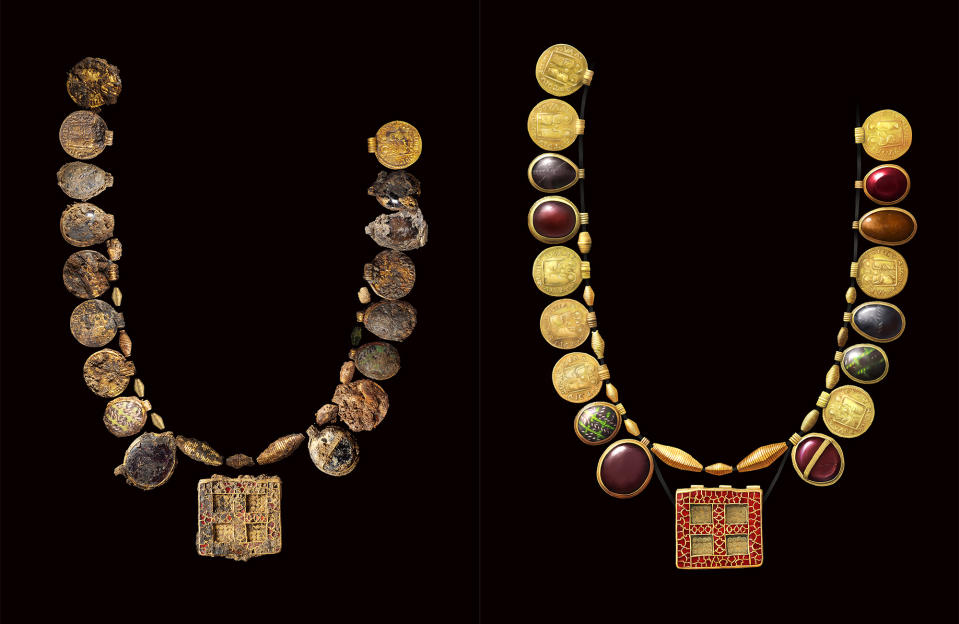1,300-year-old necklace among treasures found buried at housing development site
A 1,300-year-old necklace, discovered on the site of a new housing development, was buried in the grave of a woman who may have been royalty or a powerful Christian leader, archaeologists have said.
The centuries-old treasure was found during excavations in April ahead of construction starting on a new housing development in Northamptonshire.
Experts from the Museum of London Archaeology (MOLA) announced on Tuesday that the necklace dates back to 630-670 AD, during the Saxon period, and is part of a high-status female burial within the Kingdom of Mercia.
The museum said experts believe the grave, which also contained other treasures, is the most significant Early Medieval female burial ever discovered in Britain.

It also said the necklace is the richest of its type ever uncovered, with at least 30 pendants and beads made of Roman coins, gold, garnets, glass and semi-precious stones.
MOLA site supervisor Levente-Bence Balazs, who led a team that made the discovery, said: “When the first glints of gold started to emerge from the soil we knew this was something significant.
“However, we didn’t quite realise how special this was going to be. We are lucky to be able to use modern methods of analysis on the finds and surrounding burial to gain a much deeper insight into the life of this person and their final rites.”
The collection of treasures in the burial, which has been dubbed the “Harpole Treasure” – based on the local parish’s name, includes two decorated pots and a shallow copper dish.
The team also found that a large and elaborately decorated cross, featuring highly unusual depictions of human faces cast in silver, was placed in the grave.

Experts say that while the skeleton itself has decomposed, the combination of objects suggest the grave belonged to that of a devout high status woman such as an abbess or royalty – or even both.
MOLA said its team are now working to examine and conserve the items, including identifying and recording traces of organic remains within the burial as well as on the surface of the artefacts.
Simon Mortimer, an archaeologist consultant for RPS which is working with the housing developer Vistry Group, said: “This find is truly a once-in-a-lifetime discovery – the sort of thing you read about in textbooks and not something you expect to see coming out of the ground in front of you.”

Mr Mortimer said the discovery shows “the fundamental value” of housing developers funding archaeology.
“Vistry’s planned development provided a unique opportunity to investigate this site,” he said. “Had they not funded this work this remarkable burial may never have been found.”
Daniel Oliver, regional technical director at Vistry West Midlands, said the developer has waivered any rights to the “internationally important artefacts”.
Liz Mordue, archaeological adviser for West Northamptonshire Council, concluded: “This is an exciting find which will shed considerable light on the significance of Northamptonshire in the Saxon period.
“It also serves as a reminder of the importance of archaeology in the planning and development process.”

 Yahoo Movies
Yahoo Movies 
